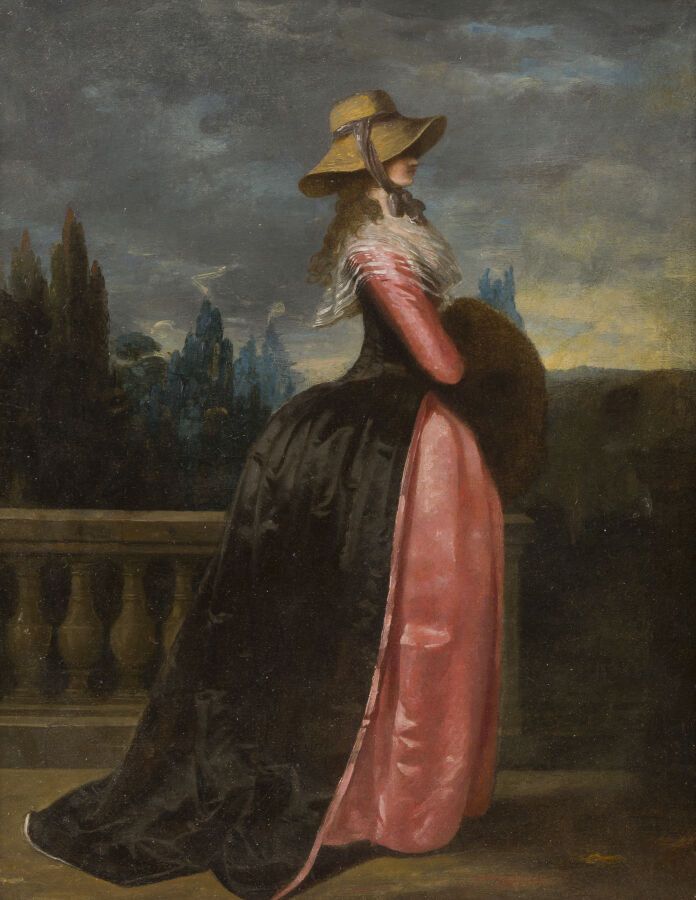Description
Attributed to Robert Lefebvre (1755 - 1830) Portrait of a woman with a muff and a pink dress Canvas, original frame 40,5 x 32,5 cm On the reverse side an inscription "Painted by Robert Lefebvre de Bayeux / du Merle (?) / de Larminat". (Old restorations) A 19th century inscription on the back of the painting attributes it to the portraitist Robert Lefèvre, who was mainly famous during the First Empire. However, unless one assumes an early work followed by a radical evolution, there is nothing in this painting that evokes Robert Lefèvre's manner. We cautiously propose to attribute this skillfully painted work to François Watteau, known as Watteau de Lille, grand-nephew of Antoine Watteau. This artist multiplied the images of fashion in drawing, engraving and painting, participating in particular in the Cahiers de costumes français. Moreover, he liked to represent elegant women in absolute profile, their faces hidden by large hats - as is the case in our painting. In a large painting by him, preserved in the Musée des Beaux-Arts in Lille: Une Fête au Colisée (1789-90), we find several of these "fashion victims" representative of French fashion at the dawn of the Revolution.
74
Attributed to Robert Lefebvre (1755 - 1830) Portrait of a woman with a muff and a pink dress Canvas, original frame 40,5 x 32,5 cm On the reverse side an inscription "Painted by Robert Lefebvre de Bayeux / du Merle (?) / de Larminat". (Old restorations) A 19th century inscription on the back of the painting attributes it to the portraitist Robert Lefèvre, who was mainly famous during the First Empire. However, unless one assumes an early work followed by a radical evolution, there is nothing in this painting that evokes Robert Lefèvre's manner. We cautiously propose to attribute this skillfully painted work to François Watteau, known as Watteau de Lille, grand-nephew of Antoine Watteau. This artist multiplied the images of fashion in drawing, engraving and painting, participating in particular in the Cahiers de costumes français. Moreover, he liked to represent elegant women in absolute profile, their faces hidden by large hats - as is the case in our painting. In a large painting by him, preserved in the Musée des Beaux-Arts in Lille: Une Fête au Colisée (1789-90), we find several of these "fashion victims" representative of French fashion at the dawn of the Revolution.
